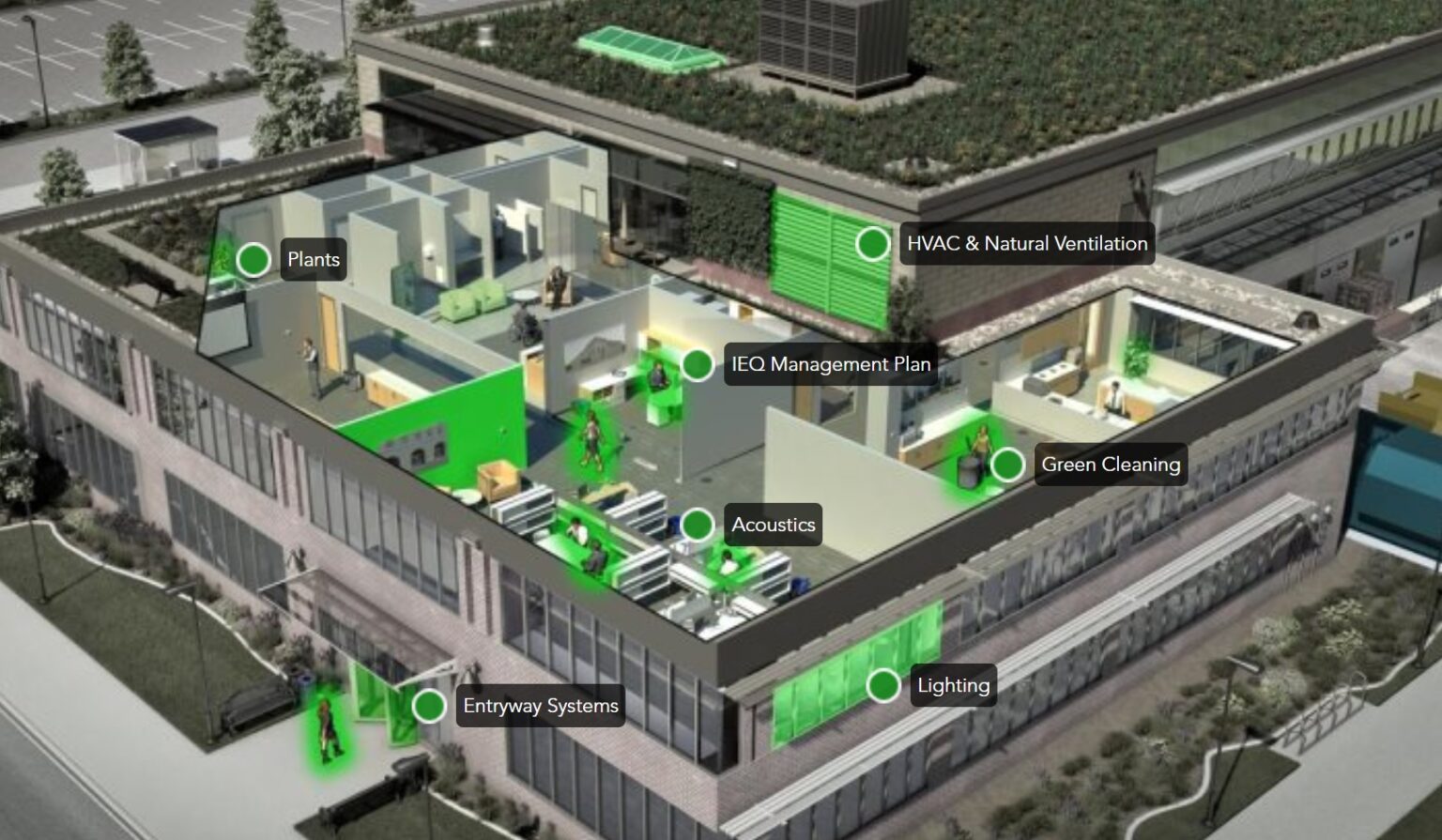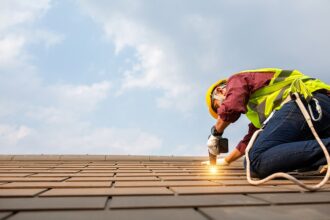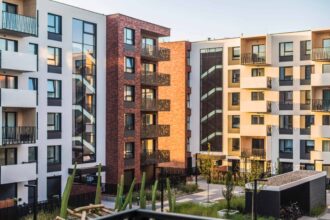This article reframes the home’s exterior as more than protection from the elements. It’s a complex system influencing everything from air quality and humidity to indoor temperatures and long-term respiratory health. Understanding this connection allows homeowners to approach exterior upgrades not just for durability or curb appeal, but also for better daily living conditions.
The Building Envelope: Your Home’s First Line of Defense
The building envelope refers to all exterior elements that enclose the indoor space, including the roof, siding, windows, doors, and insulation layers. This barrier determines how well a home resists the transfer of air, moisture, and heat between indoors and outdoors.
Key benefits of a strong building envelope:
- Stable indoor temperature with reduced heating and cooling demand
- Prevention of moisture entry that could lead to mold or mildew
- Better control of pollutants, allergens, and outdoor air infiltration
An envelope that is poorly designed or degraded allows outside air, pests, and particles to invade, directly affecting air quality and comfort inside.
Roofing: More Than Just Shelter Overhead
Roofing is the largest single surface of the building envelope and a key player in heat regulation and ventilation. A high-quality, well-ventilated roof prevents heat buildup in the attic, stops condensation, and reduces the strain on HVAC systems.
Roofing influences indoor comfort in several ways:
- Thermal resistance: Insulated roofing materials and radiant barriers reduce heat transfer.
- Ventilation: Ridge and soffit vents prevent moisture and allow hot air to escape.
- Leak prevention: Water intrusion damages insulation, framing, and ceiling finishes—encouraging mold.
Surge Exteriors emphasizes the value of roofing systems that include proper decking, ventilation, and moisture control layers. This trifecta ensures that energy efficiency aligns with indoor comfort.
Siding: The Protective Skin of the Home
Siding does more than shape the home’s style. It insulates the building and acts as a moisture and wind barrier. Advanced siding systems incorporate breathable membranes behind the cladding to allow trapped moisture to escape without letting new moisture in.
How siding improves interior conditions:
- Reduces drafts: Properly sealed siding prevents air leaks around wall assemblies.
- Controls humidity: Siding systems with vapor-permeable barriers help balance moisture.
- Buffers noise: Insulated siding reduces external noise, improving acoustic comfort indoors.
Material choice matters too. Fiber cement and vinyl siding resist mold growth and don’t emit VOCs, unlike some older wood treatments or coatings.
Moisture Control: The Hidden Threat
One of the most overlooked effects of poor exterior design is excess interior moisture. When water enters through roof leaks, poorly sealed siding, or clogged gutters, it creates the perfect environment for mold spores and airborne bacteria.
Common indicators of moisture intrusion include:
- Peeling paint or wallpaper
- Musty odors in corners or behind furniture
- Foggy windows or condensation on glass
- Health symptoms like sneezing, coughing, or fatigue
Modern exterior systems are designed to direct water away from the structure—using flashing, drip edges, house wrap, and guttering. Together, these prevent prolonged moisture exposure and safeguard indoor air quality.
Air Leakage and Infiltration: The Draft Effect
When gaps exist in the building envelope, unfiltered outdoor air sneaks inside. This air may carry pollutants like pollen, dust, exhaust fumes, or high humidity levels. During winter, this creates drafts; in summer, it leads to hot spots.
Critical areas for air leakage:
- Around windows and doors
- At the joints between roof and wall structures
- Around vents, pipes, and chimney penetrations
By reinforcing exterior components with foam insulation, weather-stripping, and tight-fitting installations, homeowners can improve indoor air purity and reduce mechanical heating and cooling cycles.
Exterior Upgrades That Directly Improve Indoor Quality
If indoor air feels stale, musty, or overly dry or humid, your solution might begin outside. Here are some strategic upgrades that directly impact indoor air and comfort:
1. Roof Replacement with Integrated Ventilation
Modern roofing systems include built-in vents that pull fresh air into the attic while exhausting heat and humidity. This reduces overall home humidity levels and improves air turnover.
2. Siding with Insulated Backing
Insulated siding not only reduces heat transfer—it also acts as a secondary barrier against allergens, dust, and insects, while improving thermal consistency.
3. Exterior Sealant Reapplication
Cracked or aged caulking around trim, doors, and windows can be replaced to reduce air leaks and control particulate intrusion.
4. Gutter Upgrades and Water Diversion
Water that overflows or pools against a home can seep through foundations and siding. Gutter improvements, splash blocks, and grading prevent water intrusion that degrades air quality from the ground up.
The Energy Efficiency Link
Comfort and air quality are closely tied to energy performance. When a home retains conditioned air and resists external influences, HVAC systems work more efficiently, and temperature consistency improves.
Exterior construction enhances energy performance by:
- Eliminating thermal bridging (heat loss through structural components)
- Supporting proper insulation application
- Controlling solar gain via roof and siding color choices
Choosing reflective roofing materials, for example, keeps upper floors cooler and reduces the risk of hot air radiating into bedrooms and living areas.
Noise Pollution: An Overlooked Comfort Metric
Airborne noise—traffic, construction, loud neighbors—affects sleep, focus, and overall satisfaction in the home. A high-performing exterior reduces sound penetration.
Sound-buffering components include:
- Dense roofing materials (e.g., architectural shingles or metal panels with underlayment)
- Double-layered or foam-backed siding
- Exterior sheathing and wrap that absorb vibrations
Homes near busy roads or schools benefit greatly from exterior systems designed for sound control.
Maintenance and Indoor Health: A Direct Relationship
Deferred maintenance on exterior components can lead to hidden leaks, pest entry, and material breakdown—all of which affect indoor conditions. Keeping the exterior in prime shape reduces the risk of:
- Mold spores entering through compromised siding or roofing
- Rodent infestations that bring allergens and disease
- VOCs emitted from decaying building materials
Routine inspections of the roof, siding, gutters, and exterior seals should be part of any home health checklist.
Final Thoughts
Indoor comfort isn’t just determined by a thermostat—it begins with the roof, the siding, and every exterior joint that connects your home to the outdoors. These elements shape how air flows, how moisture is managed, and how pollutants are kept at bay. A well-constructed and maintained exterior doesn’t just protect—it supports wellness, efficiency, and everyday comfort.
Surge Exteriors believes that true home performance is holistic. A roof isn’t just a roof; siding isn’t just a finish. They are systems working together to create healthier, more comfortable, and energy-efficient living spaces. With the right attention to exterior construction, homeowners can breathe easier—literally and figuratively—knowing the outside is working just as hard as the inside to maintain balance.














